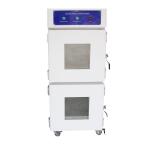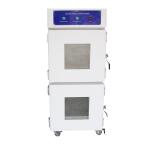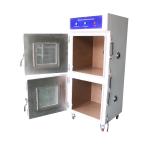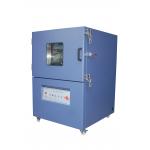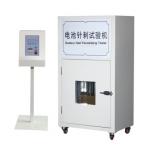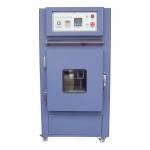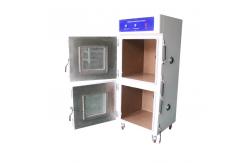In the highly demanding and safety-critical field of aerospace, the
reliability and safety of batteries are non-negotiable. The Safety
Battery Explosion-proof Climatic Temperature Test Chamber for
Aerospace Battery Testing stands as a pinnacle of engineering,
designed to subject aerospace batteries to the most extreme and
precise environmental conditions. This state-of-the-art test chamber is dedicated to evaluating the
performance and safety of aerospace batteries under a wide range of
climatic and temperature stresses. It serves aerospace
manufacturers, research institutions, and regulatory bodies. The
core objective is to replicate the harsh and variable conditions
that aerospace batteries may encounter during space missions,
satellite operations, and high-altitude flights. By doing so, it
allows for the identification and mitigation of potential safety
hazards, such as thermal runaway or explosion risks, and the
optimization of battery designs and manufacturing processes to meet
the exacting standards of the aerospace industry. - Aerospace-Grade Robust and Explosion-proof Construction
- The chamber is constructed with a heavy-duty framework, fabricated
from high-strength aerospace alloys, to withstand the intense
forces and temperature extremes associated with aerospace battery
testing. The exterior is designed to be not only explosion-proof
but also resistant to the corrosive effects of the chemicals and
gases that may be released during testing. The interior lining is
made of a specialized refractory material that can endure
temperatures exceeding 1500°C and prevent the spread of flames or
hot gases. The door of the chamber is engineered with a redundant
locking mechanism and a high-temperature-resistant gasket, ensuring
an airtight and secure seal. It also features a large, optically
clear viewing window, made of a toughened and heat-resistant
material with anti-reflective coatings, enabling detailed visual
monitoring of the testing process without compromising safety.
- Precision Climatic and Temperature Control Systems for Aerospace
Applications
- Temperature Control: The temperature control system is highly
accurate, capable of maintaining a vast temperature range,
typically from -80°C to +150°C, with an accuracy of ±0.1°C. It
utilizes advanced cryogenic and heating technologies, along with a
sophisticated feedback loop and multiple high-precision temperature
sensors. This ensures uniform temperature distribution throughout
the chamber and minimal temperature fluctuations over time. The
control panel allows for precise programming and adjustment of
temperature settings, including the ability to create complex
temperature profiles with rapid ramping and extended holding
periods, simulating the extreme thermal cycles experienced during
spaceflight, such as the rapid heating during re-entry and the
extreme cold of deep space.
- Humidity Control: The humidity control system is equally precise,
capable of achieving humidity levels from 0% to 100% RH (Relative
Humidity), with an accuracy of ±1% RH. It employs a combination of
advanced humidifiers and dehumidifiers, along with a carefully
designed air circulation system. The chamber is equipped with
humidity sensors that continuously monitor the internal humidity,
and the control system adjusts the humidification or
dehumidification processes accordingly. This allows for the
creation of stable and dynamic humidity environments, mimicking the
diverse moisture conditions that aerospace batteries may face, such
as the dryness of space and the potential humidity exposure during
ground handling and storage.
- Climatic Cycling: The chamber can perform highly precise climatic
cycling, transitioning between different temperature and humidity
conditions with rapidity and accuracy. It can simulate the abrupt
changes in climate that occur when a spacecraft moves between
different planetary atmospheres or altitudes. The control panel
enables users to define the rate of change, the duration of each
stage, and the number of cycles, providing a highly customizable
testing environment that replicates the complex and unpredictable
nature of aerospace missions.
- Advanced Instrumentation and Data Acquisition for Aerospace
Insights
- The chamber is outfitted with a comprehensive suite of sensors.
Temperature sensors are strategically placed both within the
chamber and in direct contact with the battery to provide real-time
and accurate temperature data. Humidity sensors are distributed to
ensure precise measurement of relative humidity. Pressure sensors
are installed to detect any abnormal pressure build-up within the
chamber, which could indicate a potential explosion. Voltage and
current sensors are used to track the electrical behavior of the
battery during the test, providing valuable information about its
performance and potential short-circuit risks. These sensors are
connected to a cutting-edge data acquisition system that records
and stores all the climatic, electrical, and pressure data. The
data can be accessed and analyzed in real-time or retrieved later
for in-depth studies. The data acquisition system is highly
flexible an
|
